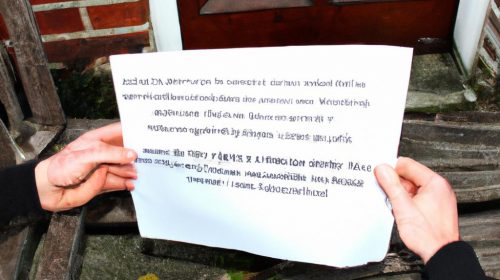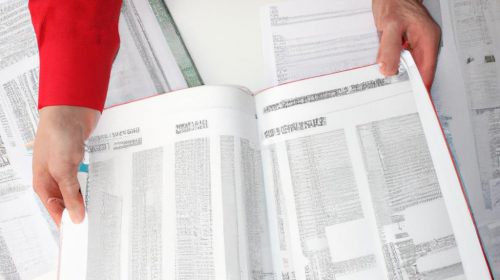Managing Rental Properties in Real Estate Business: A Comprehensive Guide to Property Management
The management of rental properties in the real estate business is a multifaceted and challenging task that requires careful planning, effective communication, and keen attention to detail. This comprehensive guide aims to provide an in-depth understanding of property management principles and practices, offering valuable insights for both new and experienced professionals in the industry.
Consider the case of Mr. Smith, a landlord who recently purchased a residential property with the intention of renting it out to tenants. Despite his initial enthusiasm, Mr. Smith soon found himself overwhelmed by the various responsibilities associated with managing a rental property. From advertising vacancies and screening potential tenants to handling maintenance requests and collecting rent payments, he quickly realized that successful property management requires more than just owning a desirable piece of real estate.
Throughout this article, we will explore key aspects of managing rental properties, including tenant selection criteria, lease agreements, property maintenance strategies, financial management techniques, and legal considerations. By delving into these topics comprehensively and providing practical tips from industry experts, this guide aims to equip readers with the knowledge and tools necessary for efficient property management. Whether you are an aspiring landlord or an established real estate professional looking to enhance your skills, the information presented here will serve as a valuable resource for navigating the complexities of managing rental properties in the real estate industry.
Understanding the Rental Market
The rental market is a dynamic and ever-changing landscape that requires careful analysis in order to effectively manage rental properties. To illustrate this point, let’s consider a hypothetical scenario: Sarah, a real estate investor, recently purchased a residential property with the intention of renting it out. Before diving into the nitty-gritty details of managing her new investment, Sarah must first gain a thorough understanding of the rental market.
To begin with, one key aspect of comprehending the rental market is recognizing its fluctuations and trends. Rental prices can vary greatly depending on factors such as location, demand, and economic conditions. For instance, in urban areas where there is high competition for limited housing options, landlords may be able to charge higher rents due to increased demand. Conversely, in rural or less desirable neighborhoods where vacancies are common, landlords may need to lower their asking price to attract tenants.
Furthermore, studying demographic data can provide valuable insights into potential renters’ preferences and needs. By analyzing statistics related to income levels, age groups, family sizes, and employment rates within specific regions, property owners can make informed decisions about marketing strategies and target audiences. This information helps determine whether it would be more advantageous to rent out apartments suitable for families or smaller units catering to young professionals.
In addition to these considerations, it is essential for property managers to stay up-to-date with legal regulations governing rentals in their respective jurisdictions. Laws regarding tenant rights and landlord responsibilities vary from place to place; failure to comply with these regulations could result in legal issues or financial penalties. Familiarizing oneself with local laws ensures that all necessary permits are obtained and lease agreements adhere to legal requirements.
- Markdown Bullet Point List:
- Understand fluctuating rental prices based on factors like location and demand.
- Analyze demographic data to better understand target audience preferences.
- Stay updated on relevant legal regulations pertaining to rentals.
- Obtain required permits and ensure lease agreements adhere to legal requirements.
To summarize, gaining a comprehensive understanding of the rental market is crucial for effective property management. By analyzing trends in rental prices, studying demographic data, and staying informed about local regulations, landlords can make well-informed decisions that maximize their investment potential and attract desirable tenants.
Setting Rental Rates
Transitioning from the previous section H2 on understanding the rental market, let us now delve into a crucial aspect of managing rental properties: analyzing property expenses. By comprehensively examining the various costs associated with owning and operating rental properties, landlords can make informed decisions to maximize profitability.
To illustrate this point, consider a hypothetical scenario where an investor owns multiple residential units in a bustling urban neighborhood. In order to determine the overall financial health of these properties, it is essential to conduct a thorough analysis of the expenses involved. This examination should encompass both recurring costs such as maintenance fees and one-time expenditures like renovations or upgrades.
When evaluating property expenses, there are several key factors that landlords must keep in mind:
- Maintenance and Repairs: Regular upkeep is vital for preserving the value and attractiveness of rental properties. From routine tasks like lawn care and cleaning services to unforeseen repairs due to tenant damages or natural disasters, maintenance expenses can significantly impact profit margins.
- Utilities: Depending on local regulations and lease agreements, landlords may be responsible for covering certain utilities such as water, electricity, or gas bills. These ongoing costs should be carefully monitored and factored into rental rates to ensure they are adequately covered.
- Insurance: Landlords need appropriate insurance coverage to protect against potential risks associated with their properties. Insurance premiums can vary based on factors like location, property type, and coverage limits.
- Property Taxes: Property taxes represent another significant expense for landlords. It is essential to stay updated on tax laws applicable to rental properties as well as any available deductions that could help minimize taxable income.
A comprehensive evaluation of property expenses allows landlords to gain insights into areas where cost savings can be achieved while maintaining high-quality standards for tenants’ comfort and satisfaction. By keeping track of these financial dynamics, savvy investors can optimize their cash flow while ensuring sustainable returns on their real estate investments.
Moving forward into our next section on advertising and marketing, it is crucial to effectively promote rental properties to attract potential tenants. By implementing targeted strategies and utilizing various advertising channels, landlords can maximize visibility and increase the chances of securing reliable occupants for their rental units.
Advertising and Marketing
Section H2: Advertising and Marketing
In the previous section, we discussed the importance of setting rental rates for your properties. Now, let’s shift our focus to another crucial aspect of managing rental properties: advertising and marketing.
Effective advertising and marketing strategies are essential for attracting potential tenants and filling vacancies quickly. Let’s consider an example to illustrate this point. Imagine you own a three-bedroom apartment in a popular neighborhood. To grab the attention of prospective renters, you decide to highlight its spacious layout, modern amenities, and proximity to local schools and parks.
To maximize the impact of your advertisement, utilize the following key strategies:
- Online listings: List your property on reputable real estate websites or platforms that cater specifically to rental properties. This allows potential tenants to easily find information about your property from anywhere at any time.
- High-quality photographs: Invest in professional photography services to capture appealing images of your property. Clear, well-lit photos can significantly enhance its desirability.
- Engaging descriptions: Craft compelling descriptions that emphasize the unique features and benefits of your property. Use descriptive language to paint a vivid picture in potential tenants’ minds.
- Social media promotion: Leverage social media channels such as Facebook, Instagram, or LinkedIn to reach a wider audience. Share captivating posts with relevant hashtags and encourage people to share them within their networks.
Table 1 below provides an overview of various online platforms where you can advertise your rental property:
| Platform | Pros | Cons |
|---|---|---|
| Zillow | Widely used; offers comprehensive | Can be competitive |
| tools for landlords | ||
| Craigslist | Free platform with high | Limited options for targeting specific |
| visibility | demographics | |
| Apartments.com | Large user base; extensive | Requires payment for certain premium |
| search filters | features | |
| Airbnb | Opportunity for short-term rentals | May attract tourists instead of long-term |
| tenants |
In conclusion, effective advertising and marketing strategies play a crucial role in attracting potential tenants to your rental property. By utilizing online listings, high-quality photographs, engaging descriptions, and social media promotion, you can increase the visibility and desirability of your property among prospective renters.
Next, we will dive into the vital process of tenant screening and selection, which ensures that you find reliable individuals who will maintain your property responsibly.
Tenant Screening and Selection
Section H2: Tenant Screening and Selection
Transitioning from the previous section on Advertising and Marketing, it is crucial for property managers to implement an effective tenant screening and selection process. Let’s consider a hypothetical scenario where a property manager receives multiple applications for a rental unit.
To begin with, conducting thorough background checks is imperative in order to ensure that potential tenants meet certain criteria. This includes verifying their employment history, income stability, and creditworthiness. For instance, let’s say there are three applicants: Applicant A has a stable job with a high salary but poor credit; Applicant B has average credit but no steady employment; and Applicant C possesses both good credit history and stable employment. In this case, it becomes evident that Applicant C would be the most suitable candidate based on their financial stability.
In addition to checking financial qualifications, evaluating references can provide valuable insights into prospective tenants’ previous renting experiences. Property managers should contact former landlords or property management companies listed as references to inquire about the applicant’s behavior as a tenant. By doing so, they can gain knowledge about factors such as timeliness of rent payments, adherence to lease terms, and overall maintenance of the rental unit.
Implementing a structured scoring system during the tenant screening process helps streamline decision-making while ensuring fairness among applicants. Here is an example of how such a scoring system might look:
| Criteria | Weight | Score (out of 10) |
|---|---|---|
| Credit score | 40% | 7 |
| Income | 30% | 9 |
| References | 20% | 8 |
| Employment | 10% | 6 |
Based on this scoring system, each applicant would receive weighted scores across various categories. The final total score determines which applicant meets the desired threshold for tenancy.
By effectively implementing these strategies in tenant screening and selection, property managers can minimize the risk of leasing to problematic tenants and ensure a smoother rental experience for both parties involved.
Moving forward, once suitable tenants have been selected, it is essential for property managers to establish clear lease agreements and consider important legal aspects.
Lease Agreements and Legal Considerations
Example Case Study:
Imagine you own a rental property in a bustling city. After carefully screening potential tenants, you have selected a responsible individual who meets all your criteria. Now comes the critical step of creating a legally binding agreement that protects both parties involved: the lease agreement.
Lease Agreement:
A well-drafted lease agreement is crucial for maintaining a harmonious landlord-tenant relationship and safeguarding your investment. Here are some key considerations when crafting a comprehensive lease agreement:
-
Clear Terms and Conditions:
- Clearly define the tenancy period, rent amount, due date, and payment methods.
- Specify any additional charges or fees such as utilities or late payment penalties.
- Outline rules regarding pets, subletting arrangements, smoking policies, noise restrictions, etc.
-
Maintenance Responsibilities:
- Clearly outline each party’s responsibilities for maintenance tasks like repairs and upkeep.
- Specify how to report maintenance issues promptly and establish reasonable response times.
-
Security Deposit Protection:
- Establish guidelines on collecting security deposits upfront to cover potential damages.
- Define conditions under which deductions can be made from the deposit upon lease termination.
-
Termination Provisions:
- Include provisions addressing early termination by either party with relevant notice periods.
- Outline procedures for inspecting the property upon move-out and returning the security deposit.
Table: Common Lease Agreement Clauses
| Clause | Purpose |
|---|---|
| Rent Increase | Specifies terms for increasing rent during the tenancy |
| Tenant Insurance | Requires tenants to obtain renters’ insurance |
| Property Access | Outlines circumstances allowing landlords access to the property |
| Renewal Options | Defines options available for tenant lease renewal |
Creating an effective lease agreement helps minimize conflicts between landlords and tenants while ensuring legal compliance throughout their tenancy. By establishing clear expectations and boundaries, both parties can feel secure in their rights and obligations.
Now that you understand the importance of lease agreements and legal considerations, let’s delve into another crucial aspect of managing rental properties – Maintenance and Repairs.
Maintenance and Repairs
Section: Maintenance and Repairs
- Transition from the previous section: Building upon a solid foundation of lease agreements and legal considerations, property managers must also possess an understanding of maintenance and repairs to ensure the smooth operation and longevity of their rental properties. By promptly addressing maintenance issues and implementing effective repair strategies, property managers can enhance tenant satisfaction while preserving the value of their real estate assets.
One example that illustrates the importance of proactive maintenance involves a hypothetical scenario where a property manager neglects routine inspections and fails to identify water damage in a rental unit. Over time, this unnoticed issue leads to mold growth, which not only poses health risks for tenants but also compromises the structural integrity of the building. Such negligence could result in costly repairs, potential lawsuits, and reputation damage for both the property manager and owner.
To prevent such situations from arising, here are some key considerations when it comes to maintenance and repairs:
- Regular Inspections: Conduct scheduled inspections to proactively identify any existing or potential issues within rental units.
- Timely Response: Promptly address reported maintenance requests from tenants to demonstrate attentiveness and prioritize their comfort.
- Qualified Contractors: Collaborate with reputable contractors who possess expertise in various areas such as plumbing, electrical work, HVAC systems, etc., ensuring quality repairs.
- Preventative Measures: Implement preventative measures like routine servicing of equipment or installation of weatherproofing materials to minimize future damages.
In addition to these factors, it is essential for property managers to keep detailed records documenting all maintenance activities performed on each rental unit. This documentation serves multiple purposes by creating a historical reference for tracking patterns or recurring problems while providing evidence should disputes arise between landlords and tenants.
By effectively managing regular inspections, responding promptly to maintenance requests, engaging qualified contractors, implementing preventative measures, and maintaining comprehensive records – property managers can foster positive relationships with tenants while safeguarding the long-term viability of their real estate investments.



